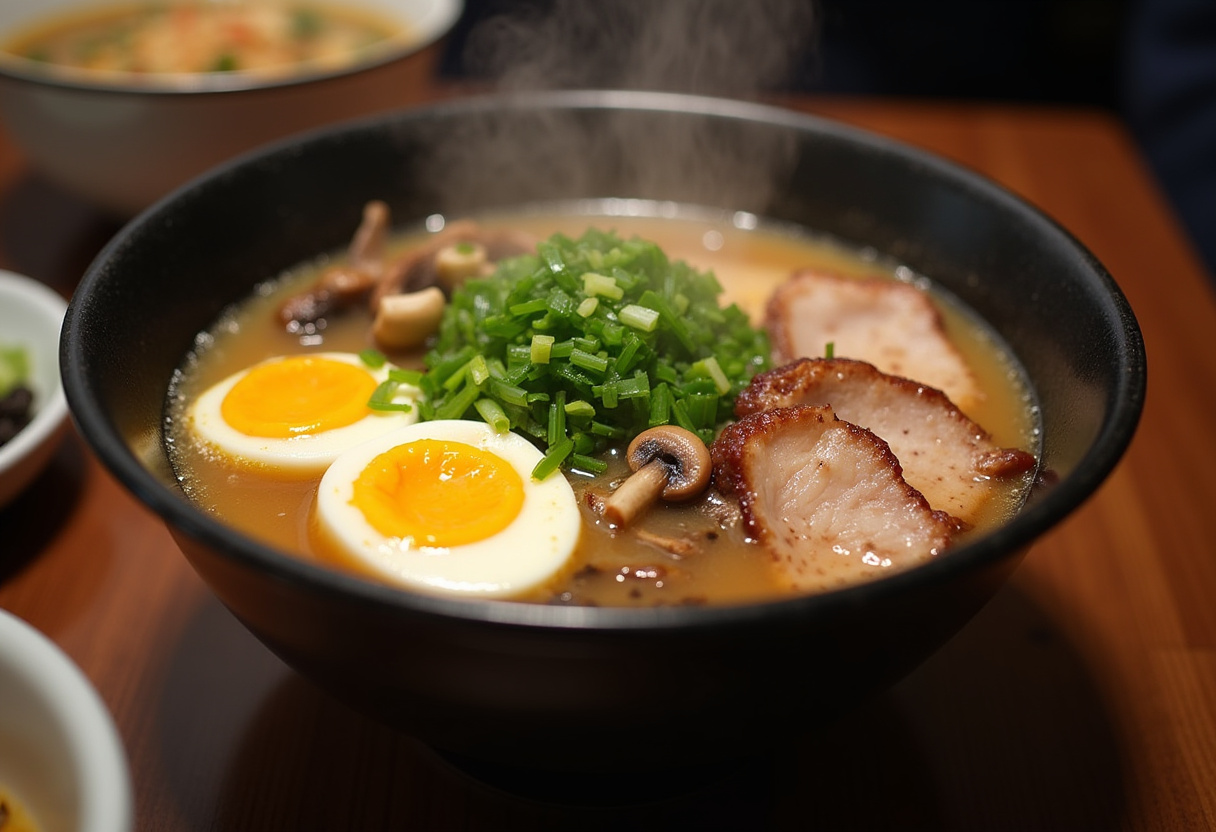Homemade Ramen: A Soul-Warming Bowl of Comfort & Flavor 🍜🔥
1. Introduction
There’s nothing quite like a steaming bowl of homemade ramen to warm your soul on a chilly evening or satisfy those deep noodle cravings. This best homemade ramen recipe delivers restaurant-quality flavors right in your own kitchen, combining rich broth, perfectly cooked noodles, and an array of fresh toppings. Whether you’re a ramen enthusiast looking to recreate your favorite bowl or a beginner eager to try making ramen from scratch, this comprehensive guide will walk you through every step to achieve ramen perfection.
What makes this recipe special is its versatility – you can easily customize it to suit your taste preferences while maintaining authentic flavors. From the umami-packed broth to the satisfying chew of fresh noodles, every element comes together to create a truly comforting meal. For more inspiration on noodle dishes, check out these delicious meal ideas that pair perfectly with ramen.
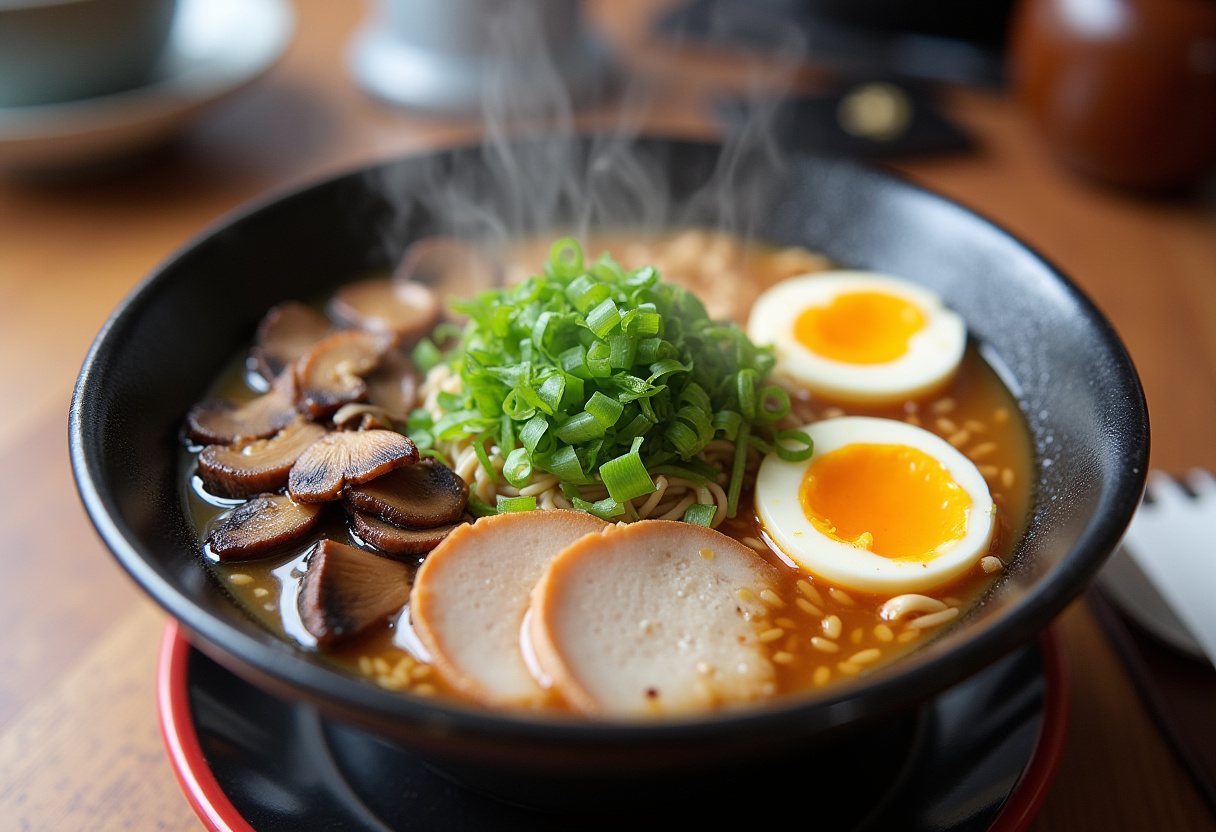
2. Ingredients
To make the best homemade ramen that rivals your favorite ramen shop, you’ll need these quality ingredients:
- 4 cups chicken or vegetable broth – The foundation of your ramen’s flavor (homemade is best but store-bought works too)
- 2 packs of fresh ramen noodles – About 7-8 oz total, look for them in the refrigerated section of Asian markets
- 2 tbsp soy sauce – Use Japanese soy sauce for authentic flavor
- 1 tbsp miso paste – White or red miso both work wonderfully
- 1 tsp sesame oil – For that distinctive nutty aroma
- 2 cloves garlic, minced – Fresh is always best
- 1-inch ginger, grated – Adds warmth and depth to the broth
- 2 soft-boiled eggs – Cooked for 6-7 minutes for that perfect jammy yolk
- 1 cup sliced mushrooms – Shiitake or enoki mushrooms work particularly well
- 2 green onions, chopped – Both white and green parts
- 1 sheet nori (seaweed), cut into strips – For that authentic ramen shop presentation
For those looking to explore more broth variations, this excellent resource offers several delicious alternatives to try.
3. Step-by-Step Instructions
Step 1: Prepare the Noodles
Bring a large pot of water to a rolling boil. The key to perfect ramen noodles is cooking them just right – too soft and they’ll become mushy in the broth. Add the fresh ramen noodles and cook according to the package instructions (usually 2-3 minutes). Drain immediately and rinse under cold running water to stop the cooking process. This step is crucial as it removes excess starch and prevents the noodles from sticking together. Lightly toss with a teaspoon of neutral oil if not using immediately.
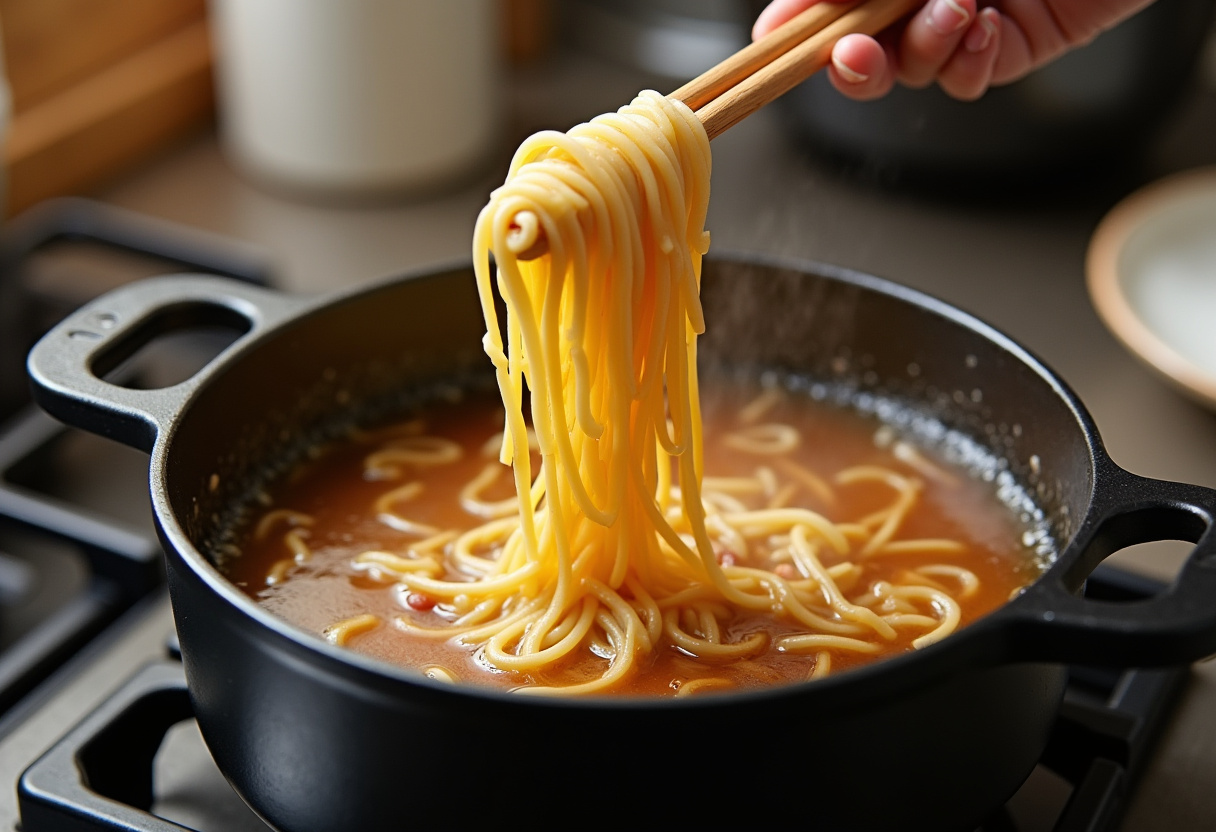
Step 2: Prepare the Toppings
While the noodles cook, prepare your toppings. This is where you can get creative! Slice the mushrooms thinly – if using shiitakes, you might want to sauté them briefly for extra flavor. Chop the green onions on a diagonal for an attractive presentation. For the soft-boiled eggs, peel them carefully and consider marinating them in a mixture of soy sauce, mirin, and water for 30 minutes to create those beautiful ramen eggs with flavorful, slightly cured whites and creamy yolks.
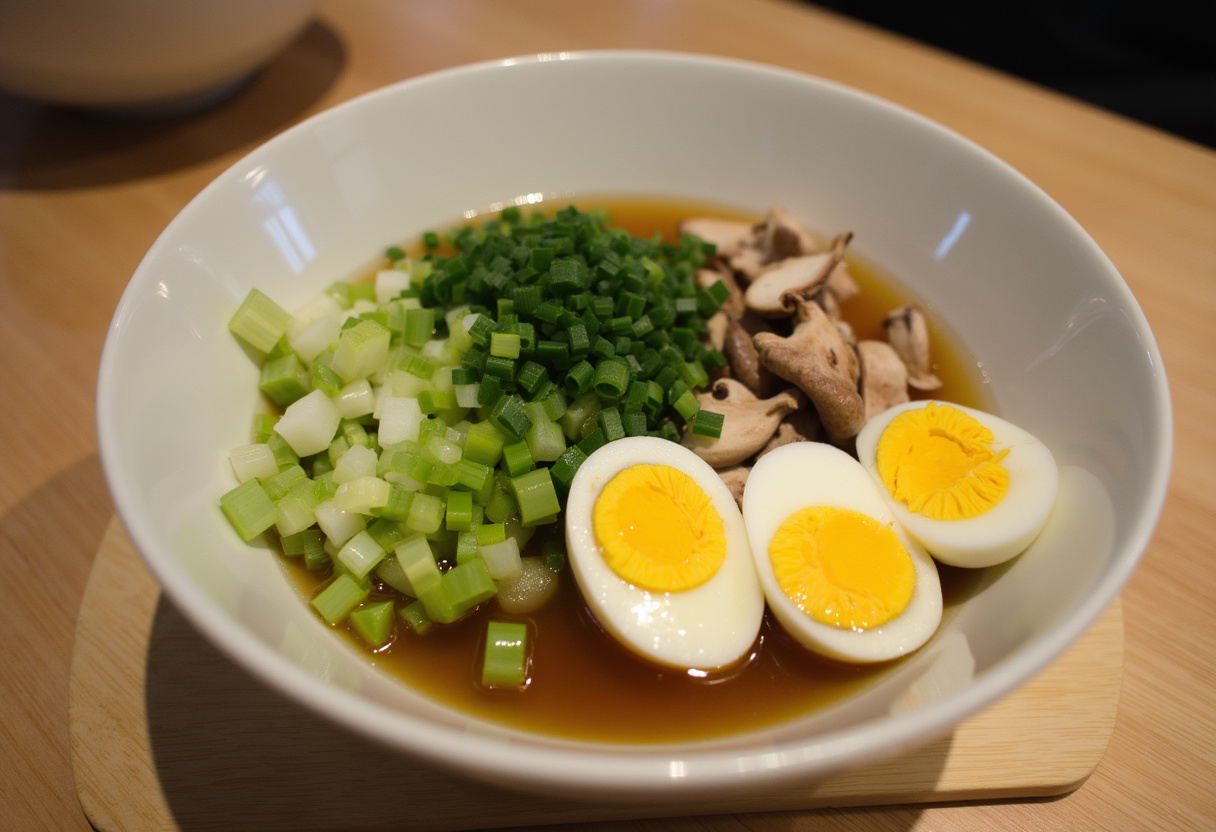
Step 3: Make the Broth
In a separate medium-sized pot, heat the sesame oil over medium heat until shimmering. Add the minced garlic and grated ginger, sautéing for about 30 seconds until fragrant but not browned – this releases their essential oils and flavors. Pour in your choice of broth, soy sauce, and whisk in the miso paste until fully dissolved. Bring to a gentle simmer (not a rolling boil) and let the flavors meld for about 10 minutes. Taste and adjust seasoning – you might want to add a pinch of sugar to balance the saltiness or a splash of mirin for depth.
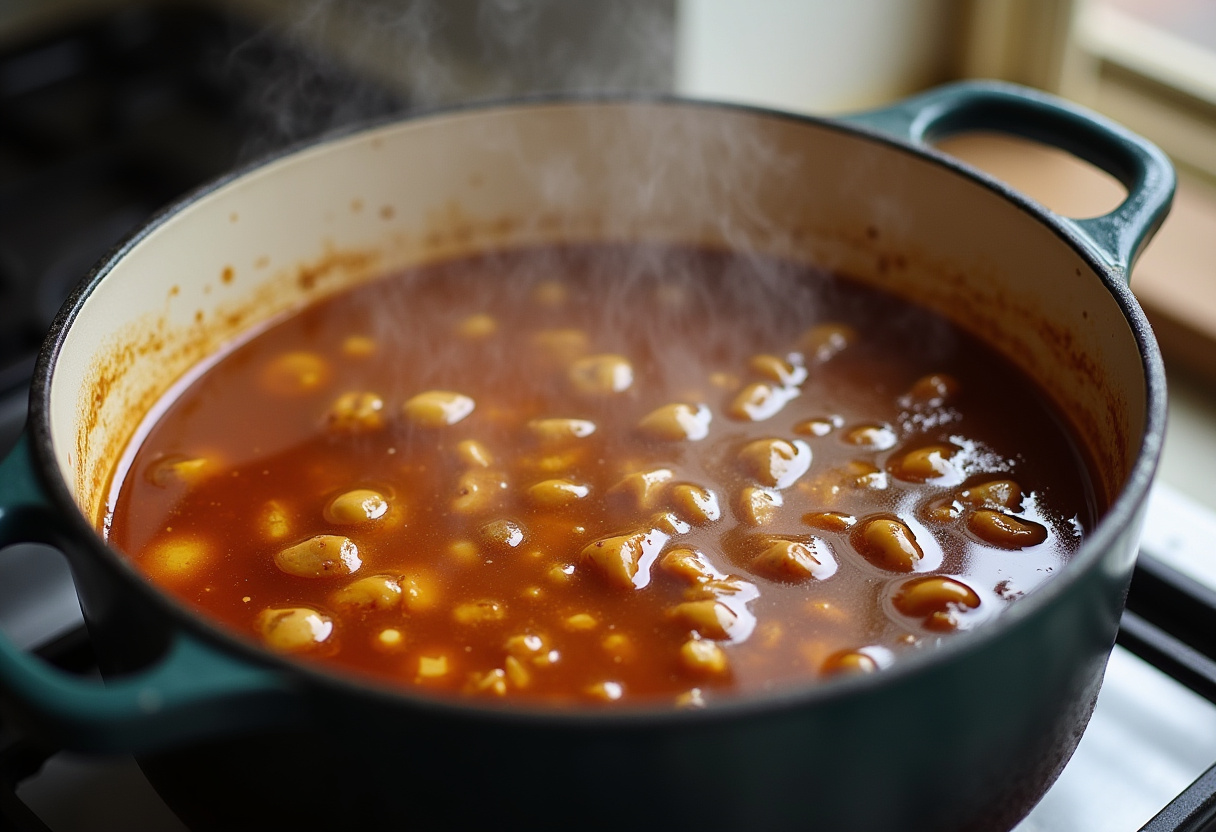
Step 4: Assemble the Ramen
Now for the fun part – assembly! Divide the cooked noodles between two deep bowls. Carefully ladle the hot broth over the noodles – you want enough to nearly cover the noodles but leave some peeking out for visual appeal. Artfully arrange your toppings: place the soft-boiled eggs halved or whole, scatter the mushrooms and green onions, and drape the nori strips along the side of the bowl. The steam rising from the bowl, the vibrant colors of the toppings, and the rich aroma will make your mouth water before the first bite. Serve immediately with chopsticks and a deep spoon for maximum enjoyment.

4. Tips for the Best Homemade Ramen
- Noodle quality matters: Fresh ramen noodles from an Asian market will give you far superior texture than instant varieties. If unavailable, look for dried ramen noodles (not the instant kind with seasoning packets).
- Broth customization: Adjust the broth’s saltiness with more or less soy sauce, or add a teaspoon of fish sauce for extra umami depth.
- Heat lovers: Add a drizzle of chili oil or a spoonful of spicy bean paste (doubanjiang) for those who enjoy some heat.
- Egg perfection: For marinated soft-boiled eggs (ajitsuke tamago), soak peeled eggs in a mixture of 1/4 cup soy sauce, 1/4 cup mirin, and 1/2 cup water for 2-4 hours in the refrigerator.
- Fat content: For a richer broth reminiscent of tonkotsu ramen, add a tablespoon of pork fat or unsalted butter to the finished broth.
5. Variations
One of the joys of homemade ramen is how easily you can customize it to your preferences. Here are some delicious variations to try:
- Spicy Miso Ramen: Add 1 tbsp of chili paste (like gochujang) or 2 tsp of tobanjan to the broth, along with some ground pork for a hearty version.
- Vegetarian Ramen: Use rich vegetable broth and add toppings like corn, bamboo shoots, bean sprouts, and fried tofu instead of eggs.
- Chicken Ramen: Top with shredded cooked chicken (try sous vide chicken breast for extra tenderness) and add a splash of chicken fat to the broth.
- Seafood Ramen: Add shrimp, scallops, or clams to the broth during the last few minutes of cooking, along with some bonito flakes for extra seafood flavor.
- Curry Ramen: Stir in 1-2 tablespoons of Japanese curry roux to the broth for a comforting, spiced variation.
6. Serving Suggestions
While ramen is satisfying on its own, these accompaniments can turn it into a complete meal:
- Steamed dumplings (gyoza): The crispy bottoms and juicy fillings contrast beautifully with the ramen.
- Pickled vegetables: Try beni shoga (red pickled ginger), takuan (pickled daikon), or kimchi for a tangy contrast.
- Side salads: A simple cucumber salad or wakame seaweed salad provides refreshing contrast.
- Beverages: A cold Japanese beer (like Sapporo or Asahi), chilled sake, or unsweetened green tea all pair wonderfully.
- Extra condiments: Set out sesame seeds, chili oil, garlic paste, and extra soy sauce so everyone can customize their bowl.
7. Storage & Reheating
While ramen is best enjoyed fresh, you can store components properly for later enjoyment:
- Broth: Cool completely and store in an airtight container in the refrigerator for up to 3 days or freeze for up to 3 months. The flavor often improves after a day.
- Noodles: It’s best to cook fresh noodles each time, but you can rinse and store cooked noodles with a bit of oil for 1-2 days in the fridge.
- Toppings: Prepare toppings fresh when possible. Marinated eggs can be kept in their liquid for 2-3 days.
- Reheating: Gently reheat broth on the stove (don’t boil vigorously if it contains miso). Cook fresh noodles and assemble just before serving.
8. FAQs
Can I use instant ramen noodles for this recipe?
While you can use the noodles from instant ramen packets (discard the seasoning), fresh or specialty dried ramen noodles will give you far superior texture and flavor. The instant varieties tend to become mushy quickly in hot broth.
How can I make my ramen broth richer and more flavorful?
For a more restaurant-style rich broth, try these techniques:
– Simmer the broth longer (up to an hour) to concentrate flavors
– Add a spoonful of chicken fat, pork fat, or unsalted butter
– Include a piece of kombu (dried kelp) while simmering
– Add a splash of sake or mirin
– Include a small amount of bonito flakes
Can I make vegetarian ramen that’s still flavorful?
Absolutely! Use a high-quality vegetable broth and boost umami with:
– Dried shiitake mushrooms (soak them in the broth)
– Miso paste (a combination of white and red works well)
– Nutritional yeast
– Soy sauce or tamari
– Roasted garlic and ginger
What’s the secret to perfect ramen eggs?
The ideal ramen egg has:
– 6-7 minute boiling time for jammy yolks
– Immediate ice bath to stop cooking
– Gentle peeling under running water
– Marinating in soy-mirin mixture for 2-4 hours
– Cutting with dental floss for clean halves
Can I freeze homemade ramen?
You can freeze the broth (without noodles or delicate toppings) for up to 3 months. Noodles don’t freeze well – they become mushy when thawed. Always add fresh toppings when serving.
9. Conclusion
Mastering this best homemade ramen recipe opens up a world of comforting, customizable meals that can rival your favorite ramen shop. With its rich, flavorful broth, perfectly textured noodles, and array of fresh toppings, this dish satisfies on so many levels – warmth, flavor, texture, and visual appeal. The beauty of homemade ramen is that you can adjust every element to your exact preferences, making it slightly different each time you prepare it.
Remember that like many great dishes, ramen improves with practice. Don’t be afraid to experiment with different broths, noodles, and toppings to create your signature bowl. Once you’ve mastered the basics, you might want to explore regional variations like tonkotsu (pork bone broth) or shoyu (soy sauce-based) ramen. For more comforting meal ideas to expand your repertoire, visit MealsMom.
So gather your ingredients, prepare your toppings, and get ready to enjoy the deeply satisfying experience of homemade ramen. The first time you take that perfect bite – chewy noodles, rich broth, and flavorful toppings all in harmony – you’ll understand why ramen has become such a beloved dish worldwide. Happy slurping! 🍜✨
Print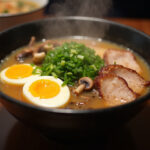
Homemade Ramen
- Total Time: 30 minutes
- Yield: 2 servings 1x
Description
Craft a comforting bowl of Homemade Ramen featuring a rich, umami-packed broth, tender noodles, and customizable toppings like soft-boiled eggs, mushrooms, and green onions. This recipe brings authentic Japanese flavors to your kitchen, perfect for a cozy meal.
Ingredients
- 4 cups chicken or vegetable broth
- 2 packs fresh ramen noodles (about 7–8 oz total)
- 2 tablespoons soy sauce
- 1 tablespoon miso paste (white or red)
- 1 teaspoon sesame oil
- 2 cloves garlic, minced
- 1-inch piece ginger, grated
- 2 soft-boiled eggs
- 1 cup sliced mushrooms (shiitake or enoki)
- 2 green onions, chopped
- 1 sheet nori (seaweed), cut into strips
Instructions
- Bring a large pot of water to a rolling boil. Add fresh ramen noodles and cook according to package instructions (usually 2-3 minutes). Drain immediately and rinse under cold running water to stop the cooking process. Set aside.
- Prepare toppings: Slice mushrooms thinly; chop green onions diagonally; peel soft-boiled eggs and cut in half; cut nori into strips.
- In a separate medium-sized pot, heat sesame oil over medium heat. Add minced garlic and grated ginger, sautéing for about 30 seconds until fragrant but not browned.
- Pour in chicken or vegetable broth and soy sauce. Whisk in miso paste until fully dissolved. Bring to a gentle simmer and let the flavors meld for 5 minutes.
- Divide cooked noodles evenly between two bowls. Ladle the hot broth over the noodles.
- Arrange prepared toppings over the noodles and broth: soft-boiled egg halves, sliced mushrooms, chopped green onions, and nori strips.
- Serve immediately, allowing diners to mix toppings into the broth as desired.
Notes
- For added protein, consider including slices of cooked chicken, pork, or tofu.
- Customize your ramen with additional toppings like corn kernels, bamboo shoots, or bean sprouts.
- Adjust the saltiness by varying the amount of soy sauce to suit your taste.
- For a spicier broth, add a dash of chili oil or a sprinkle of red pepper flakes.
- Prep Time: 15 minutes
- Cook Time: 15 minutes
- Category: Main Course
- Method: Stovetop
- Cuisine: Japanese
Nutrition
- Serving Size: 1 bowl
- Calories: 450
- Sugar: 4g
- Sodium: 1800mg
- Fat: 12g
- Saturated Fat: 3g
- Unsaturated Fat: 7g
- Trans Fat: 0g
- Carbohydrates: 65g
- Fiber: 4g
- Protein: 20g
- Cholesterol: 190mg
Keywords: homemade ramen, Japanese noodle soup, easy ramen recipe, miso ramen, comfort food

